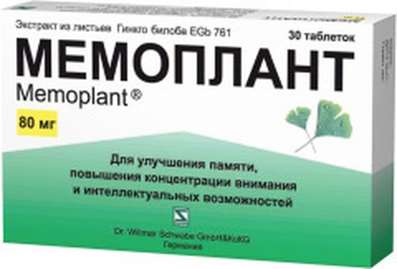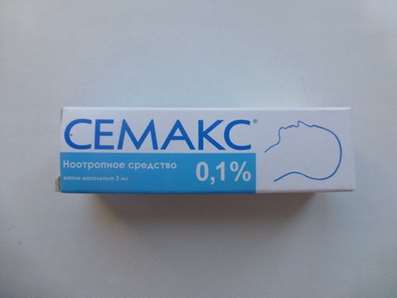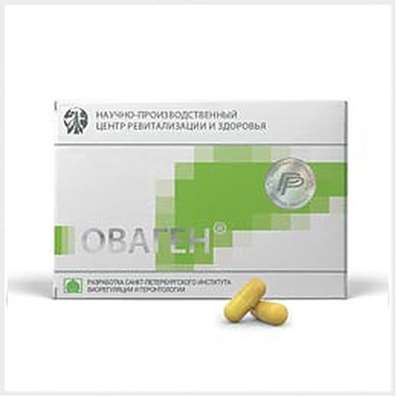Instruction for use: Budenit Steri-Neb
I want this, give me price
ATX Code R03BA02 Budesonide
Active substance: Budesonide
Pharmacological group
Glucocorticosteroid for topical use [Glucocorticosteroids]
Nosological classification (ICD-10)
J05.0 Acute obstructive laryngitis [croup]
False groats, Laryngeal exacerbation with angioneurotic edema
J44.9 Chronic obstructive pulmonary disease, unspecified
Obstructive pulmonary diseases, Bronchial obstruction, bronchial obstruction, Exacerbation of chronic obstructive pulmonary disease, reversible airflow obstruction, Reversible airway obstruction, panbronchiolitis, Panbronhit, COPD, Chronic pulmonary infection, Chronic infection of the lower respiratory tract, Chronic obstructive pulmonary disease, Chronic obstructive pneumonia, Chronic lung disease, Chronic obstructive pulmonary disease, Chronic bronchopulmonary disease, Chronic broncho-pulmonary diseases, Airway obstruction
J45 Asthma
Asthma physical effort, status asthmaticus, Bronchial asthma, Asthma lung flow, Bronchial asthma with obstruction of sputum discharge, Bronchial asthma heavy currents, Bronchial asthma physical effort, hypersecretory asthma, Hormone-dependent form of bronchial asthma, Relief of asthma attacks in bronchial asthma, Non-allergic asthma, nocturnal asthma, Exacerbation of asthma, Asthma attacks, Endogenous forms of asthma, Night asthma, Cough with bronchial asthma
Composition
Suspension for inhalations dosed 1 ml
active substance:
Budesonide 0.25 mg\ 0.5 mg
Auxiliary substances: polysorbate 80 - 0.2 mg; Sodium chloride - 8.5 mg; Sodium citrate dihydrate - 0.5 mg; Citric acid monohydrate - 0.31 mg; Disodium edetate 0.1 mg; Water for injection - up to 1 ml
Description of dosage form
The fine suspension is almost white, practically odorless.
pharmachologic effect
Pharmacological action - anti-inflammatory, antiallergic, antiexudative.
Pharmacodynamics
GCS with pronounced local anti-inflammatory and antiallergic effect, budesonide increases the production of lipocortin, which is an inhibitor of phospholipase A2, inhibits the release of arachidonic acid, inhibits the synthesis of leukotrienes and PG, reduces inflammatory exudation and production of cytokines, inhibits the migration of macrophages, reduces the severity of infiltration, granulation, Chemotaxis (which explains the effectiveness of delayed-type hypersensitivity reactions), inhibits the release and mast cell inflammatory mediators (immediate hypersensitivity reaction).
Budesonide restores the sensitivity of the patient to bronchodilators, allowing to reduce the frequency of their use, reduces the swelling of the bronchial mucosa, the production of mucus, the formation of sputum and reduces the hyperreactivity of the airways. Increases mucociliary transport. Well tolerated with long-term treatment, does not have mineralocorticoid activity.
The time to start the therapeutic effect after inhalation of a single dose of the drug is several hours. The maximum therapeutic effect is achieved 1-2 weeks after treatment. Budesonide effectively prevents attacks of bronchial asthma of physical stress, but does not arrest an acute attack of bronchospasm.
Pharmacokinetics
After inhalation budesonide is rapidly adsorbed, in adults the systemic bioavailability after inhalation of budesonide through the nebulizer is approximately 15% of the total prescribed dose.
Cmax in plasma is 3.5 nmol / l and is reached 30 minutes after the onset of inhalation.
Binding to plasma proteins is 85-90%. Vd is 3 l / kg.
Budesonide undergoes biotransformation with participation of microsomal liver enzymes, primarily the isoenzyme CYP3A4 (cytochrome P450 isoenzyme). The main metabolites - 6-β-hydroxybuddesonide and 16-α-hydroxy-prednisolone - are practically devoid of biological activity (100 times less than budesonide).
It is excreted by the kidneys in the form of metabolites - 70%, through the intestine - 10%. Systemic clearance aerosolation - 0.5 l / min. The systemic clearance of metabolites is 1.4 l / min. T1 / 2 - about 2-2,8 hours.
Indications
Treatment of bronchial asthma (as a basic therapy, with insufficient efficiency of β2-adrenomimetics, to reduce the dose of oral GCS) in case of ineffectiveness or impossibility of using budesonide in an inhaler injecting the drug into the respiratory tract or inhaler containing the drug in the form of a powder;
COPD treatment (chronic obstructive pulmonary disease);
Stenosing laryngotracheitis (false croup).
Contraindications
Hypersensitivity to budesonide or any other component of the formulation;
Children's age (up to 6 months).
With caution: pulmonary tuberculosis, fungal, bacterial, parasitic and viral infections of the respiratory system, cirrhosis, pregnancy, lactation.
pregnancy and lactation
The use of budesonide during pregnancy is possible only if the benefit to the mother exceeds the possible risk to the fetus. If necessary, use the drug in the lowest effective dose.
Data on the allocation of budesonide in breast milk are not available. The purpose of the drug during lactation is possible only under the supervision of a doctor in the case when the expected benefit for the mother exceeds the possible risk for the child.
Side effects
Often (≥1 / 100, but <1/10) - irritation and dryness of the mucous membrane of the pharynx, candidal stomatitis, hoarseness of the voice, coughing, dryness of the oral mucosa, unpleasant gustatory sensations.
Rarely (≥1 / 10,000, but <1/1000) - nervousness, excitability, depression, behavioral disorder, hypersensitivity reactions of immediate and delayed action (including rash, contact dermatitis, hives, angioedema and bronchospasm), skin bruising or thinning Skin, headache, nausea, esophageal candidiasis.
With inhaled treatment of SCS (glucocorticosteroids), systemic effects can occur, primarily with long-term treatment with high doses. The likelihood of such effects is significantly lower than when treating for oral corticosteroids. Possible systemic effects include adrenal suppression, growth retardation in children and adolescents, decreased bone mineral density, cataracts and glaucoma.
The preparation Budenit Steri-Neb contains 0.1 mg / ml of disodium edetate, which can cause bronchospasm at concentrations above 1.2 mg / ml.
As with other inhalation therapies, paradoxical bronchospasm may occur with a rapid increase in dyspnea after the dose. In the event of a severe reaction, alternative therapy should be prescribed.
In some cases, irritation of the facial skin occurs when using a nebulizer with a mask. To prevent irritation after applying the mask, the face skin should be rinsed with water.
Interaction
Pharmaceutical: the preparation Budenit Steri-Neb can be mixed with 0.9% sodium chloride solution and other solutions intended for use with nebulizers, for example terbutaline, salbutamol, fenoterol, acetylcysteine, sodium cromoglycate or ipratropium bromide.
Pharmacological: budesonide metabolism is mainly carried out with the participation of the CYP3A4 isoenzyme (cytochrome P450 isoenzyme). Admission of 100 mg of ketoconazole 2 times a day increases the plasma concentration of orally administered budesonide 10 mg once, on average, 7.8 times. There is no information on such interaction with inhaled dosage forms of budesonide, but a significant increase in plasma concentration in the plasma should be expected, therefore, inhibitors of the CYP3A4 isoenzyme such as ketoconazole and itraconazole may enhance the systemic effect of budesonide. Other potent inhibitors of CYP3A4 are also likely to significantly increase the concentration of budesonide in plasma.
Preliminary inhalation of β-adrenomimetics expands bronchi, improves the flow of budesonide into the respiratory tract and enhances its therapeutic effect.
Phenobarbital, phenytoin, rifampicin decrease efficiency (induction of microsomal liver enzymes).
Methandienone, estrogens strengthen the action of budesonide.
Dosing and Administration
Inhalation with nebulizer inhalers (see "Special instructions", Technique of use).
Recommended doses of the drug in the case of the onset of inhaled GCS therapy for severe bronchial asthma, as well as against a dose reduction or withdrawal of oral GCS (glucocorticosteroids), are as follows:
Adults (including the elderly) and children over 12 years of age: usually 1-2 mg 2 times a day. The maintenance dose is 0.5-4 mg / day.
Children from 6 months to 12 years: 0.25-0.5 mg 2 times a day. The maintenance dose is 0.25-2 mg / day. In the event that the recommended dose does not exceed 1 mg / day, the entire dose of the drug can be taken at a time (one time).
The maintenance dose should be selected individually. When the therapeutic effect is achieved, the maintenance dose should be reduced to the lowest effective dose.
Adults (including the elderly) and children from 12 years: 0.5-1 mg 2 times a day.
Children from 6 months to 12 years: 0.25-0.5 mg 2 times a day.
If it is necessary to achieve an additional therapeutic effect, it may be recommended to increase the dose of Budenit Steri-Neb instead of combining with oral GCS (to reduce the risk of systemic effects).
Overdose
With acute overdose of budesonide, clinical manifestations usually do not occur.
Treatment: withdrawal of the drug, inhalation of short-acting bronchodilators.
With prolonged use in doses exceeding the recommended, a systemic SCS (glucocorticosteroids) -experiment in the form of hypercorticism and suppression of adrenal function may develop.
special instructions
The drug Budenit Steri-Neb is not intended for rapid relief of asthma attacks. For relief of acute bronchospasm it is recommended to use short-acting inhaled bronchodilators.
Patients who do not receive SCS
Usually, the therapeutic effect occurs within 10 days. In patients with excessive secretion of mucus in the bronchi initially can be short (about 2 weeks) additional treatment with oral GCS. After a course of oral therapy in many cases it is possible to completely refuse from taking GCS inside.
Patients on GKS therapy
Before transferring the patient from oral GCS to treatment with Budenit Steri-Neb, the patient's condition should be relatively stable, after which the drug Budenit Steri-Neb is used in combination with the previously used dose of GCS for oral administration for about 10 days. Subsequently, the dose of oral GCS should be gradually reduced (for example 2.5 mg prednisolone or its equivalent every month), as far as possible to the lowest level. In most cases, oral GCS can be completely replaced by the preparation Budenit Steri-Neb.
Sometimes, during the transfer from treatment with SCS for ingestion for treatment with Budenit Steri-Neb, symptoms (eg, rhinitis, eczema and muscle and joint pain) that were previously stopped by taking systemic drugs are observed. The occurrence of such symptoms as fatigue, headache, nausea and vomiting may indicate the development of systemic failure of GCS. In such cases, it may even be necessary to temporarily increase the dose of oral GCS.
The systemic side effect of inhaled glucocorticosteroids may be manifested primarily with the administration of high doses for an extended period of time. The likelihood of this effect is significantly less than when treated with oral GCS. Possible systemic effects include adrenal suppression, growth retardation in children and adolescents, decreased bone mineral density, cataracts and glaucoma. Therefore, it is very important to titrate the dose of inhaled glucocorticosteroids to the lowest dose at which effective control of the disease remains. It is recommended to regularly monitor the growth in children receiving inhaled glucocorticosteroids for an extended period of time. In the case of growth retardation, treatment should be adjusted to reduce the dose of GCS for inhalation to the lowest dose at which effective control of bronchial asthma persists.
Oral administration of ketoconazole and itraconazole or other inhibitors of the CYP3A4 isoenzyme causes an increase in the systemic effect of budesonide. Therefore, in case of necessity of joint application it is necessary to take them with the maximal interval. You should also consider the possibility of reducing the dose of budesonide.
To minimize the risk of fungal stomatitis, the patient and / or the child's parents should be informed of the need to rinse the mouth with water after each inhalation of the drug.
Influence on ability to drive a vehicle and work with machinery. The drug Budenit Steri-Neb does not adversely affect the ability to drive a vehicle and work with machinery. In the case of the development of rare side reactions from the nervous system, one should avoid activity requiring rapidity, psychomotor reactions.
Technique of use
Ultrasonic nebulizers are unsuitable for use with the drug Budenit Steri-Neb, the dose required by the patient may vary depending on the nebulizer used. The time of inhalation and the dose of the drug depend on the speed of the air flow, the volume of the nebulizer chamber and the filling volume. Therefore, for inhalation of Budenit Steri-Neb it is necessary to use a suitable nebulizer, as well as a mouthpiece and a special face mask. The nebulizer must be connected to an air compressor to create an appropriate airflow.
Before using the medication, it is necessary to read the instructions of the manufacturer of nebulizers.
1. Prepare the nebulizer according to the manufacturer's instructions.
2. Separate the ampoule with a sterile solution from the block, to do this, turn and pull it.
3. Hold the ampoule vertically upside down with a cap, break off the cap
4. Extract the solution into the nebulizer reservoir
5. Use a nebulizer according to the manufacturer's instructions.
6. Rinse out mouth after inhalation.
7. If a mask is used, it is necessary to wash the skin of the face.
8. The solution left unused in the nebulizer chamber should be poured.
9. Thoroughly wash the nebulizer.
10. When using the drug, avoid contact with the solution in the eyes.
Form of issue
Suspension for inhalation dosed, 0.25 mg / ml and 0.5 mg / ml. In ampoules from LDPE, 2 ml. 5 amp. Are welded to each other in the form of a block. 1 block in laminated foil. 4 or 12 blocks in a cardboard bundle.
Terms of leave from pharmacies
On prescription.
Storage conditions
At a temperature not exceeding 25 ° C.
Keep out of the reach of children.
Shelf life
2 years.
Do not use after the expiry date printed on the package.

 Cart
Cart





